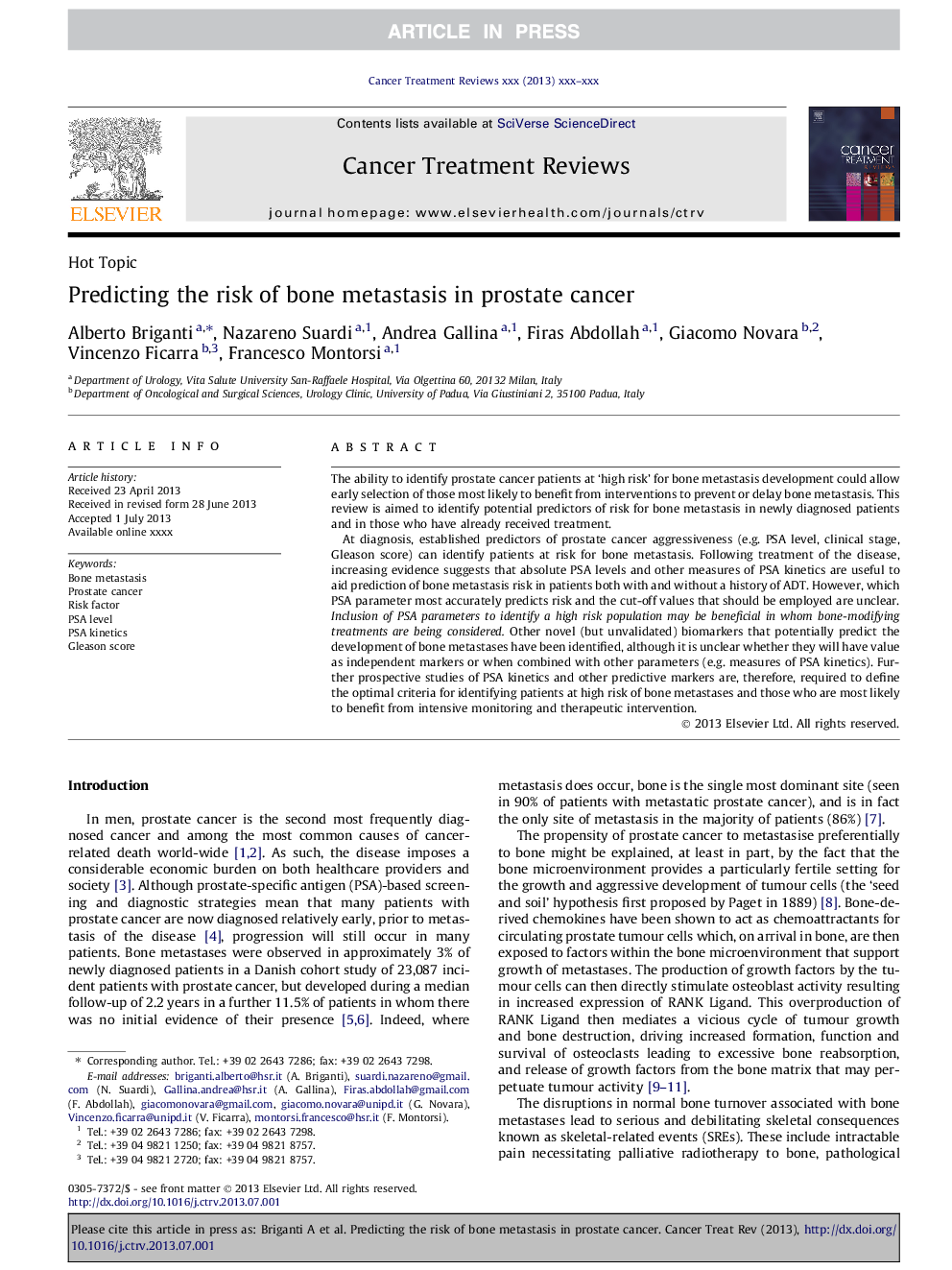| Article ID | Journal | Published Year | Pages | File Type |
|---|---|---|---|---|
| 6190633 | Cancer Treatment Reviews | 2014 | 9 Pages |
Abstract
At diagnosis, established predictors of prostate cancer aggressiveness (e.g. PSA level, clinical stage, Gleason score) can identify patients at risk for bone metastasis. Following treatment of the disease, increasing evidence suggests that absolute PSA levels and other measures of PSA kinetics are useful to aid prediction of bone metastasis risk in patients both with and without a history of ADT. However, which PSA parameter most accurately predicts risk and the cut-off values that should be employed are unclear. Inclusion of PSA parameters to identify a high risk population may be beneficial in whom bone-modifying treatments are being considered. Other novel (but unvalidated) biomarkers that potentially predict the development of bone metastases have been identified, although it is unclear whether they will have value as independent markers or when combined with other parameters (e.g. measures of PSA kinetics). Further prospective studies of PSA kinetics and other predictive markers are, therefore, required to define the optimal criteria for identifying patients at high risk of bone metastases and those who are most likely to benefit from intensive monitoring and therapeutic intervention.
Related Topics
Health Sciences
Medicine and Dentistry
Oncology
Authors
Alberto Briganti, Nazareno Suardi, Andrea Gallina, Firas Abdollah, Giacomo Novara, Vincenzo Ficarra, Francesco Montorsi,
